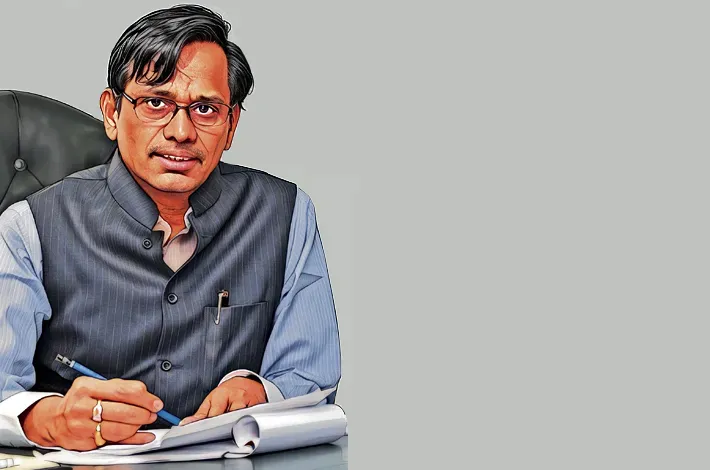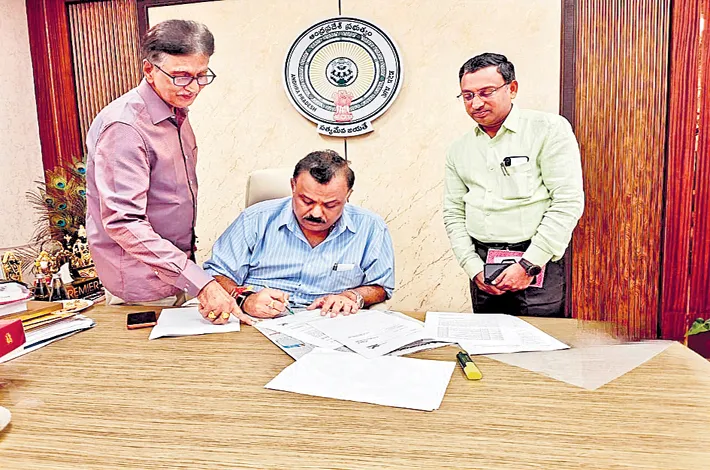Delimitation Impasse: Facts, Concerns, and a Path Forward
26-03-2025 12:00:00 AM

The delimitation impasse is more than a technical exercise—it’s a test of India’s federal spirit
c l rajam
The delimitation debate in India, whether one welcomes it or not, has been thrust into the spotlight by the Bharatiya Janata Party (BJP), only to face fierce resistance from southern states and Punjab.
This contentious issue revolves around the redrawing of parliamentary constituencies based on population—a process rooted in the constitutional mandate to ensure fair representation. Yet, as India’s demographic and economic landscape has evolved dramatically since the last major delimitation in 1973, the stakes have never been higher, nor the fault lines more pronounced.
When India’s parliamentary seats were fixed at 574, the country’s population stood at a modest 34 crores. Today, that number has ballooned to over 140 crores, accompanied by significant internal migration, particularly to urban centers across state lines. This shift has fuelled calls to increase the number of parliamentary seats to reflect the current population. However, the debate is not merely about numbers—it’s about fairness, federal balance, and the risk of deepening regional divides.
The BJP has argued that southern states will not see a reduction in their absolute number of seats, a claim intended to assuage fears. But this assurance masks a critical reality: if northern states, with their higher population growth, gain a substantial number of new seats while southern representation remains static, the proportional influence of the south in Parliament will shrink.
For instance, states like Uttar Pradesh and Bihar could see their seat counts soar, while Tamil Nadu, Kerala, and Karnataka—despite their economic efficiency and success in controlling population growth—would wield less clout in national decision-making. This relative decline is not just a statistical quirk; it threatens to exacerbate the North-South divide, a prospect that could destabilize India’s unity at a time when the BJP is keen to expand its foothold in the south.
The facts underscore the southern states’ apprehensions. Since the 1970s, when India embraced family planning, southern states have excelled in stabilizing their populations while boosting literacy, healthcare, and economic output. Tamil Nadu and Kerala, for example, contribute disproportionately to India’s GDP despite receiving a smaller share of central resources.
In contrast, many northern states have lagged in population control, resulting in rapid demographic growth. A delimitation exercise solely based on population would reward this disparity, effectively penalizing the south for its developmental achievements. Such an outcome would not only undermine federal equity but also contradict the national goal of balanced growth.
The BJP’s messaging has done little to quell these concerns. While leaders like Union Home Minister Amit Shah have promised that southern seats won’t be reduced “pro rata,” the lack of clarity—coupled with the absence of a legislative framework—has fuelled scepticism. Southern leaders argue that even maintaining current seat numbers is deceptive if the overall parliamentary pie grows disproportionately in the north. This could shift the balance of power, favouring BJP strongholds and marginalizing states where the party struggles electorally. The unrest this could spark is precisely what the country cannot afford, especially as the BJP seeks to build bridges in the south.
In the larger public interest, the BJP leadership must move beyond vague assurances and provide a transparent roadmap before the issue snowballs into a full-blown crisis. The delimitation process, expected to follow the next census post-2026, is too consequential to be left ambiguous. Clarity now could prevent a divisive showdown later.
What’s the solution?
A fair approach must balance population with other metrics, ensuring that states excelling in governance and economic performance are not short-changed. One practical proposal is to retain the current state-wise parliamentary strength—574 seats—as a baseline. Then, introduce an additional bloc of, say, 180 seats to accommodate population growth and other factors.
Of these, 90 could be allocated based on each state’s contribution to GDP, rewarding economic efficiency, while the remaining 90 could reflect population size. This dual-criteria model would achieve multiple aims: it would address the need for greater representation, recognize developmental success, and prevent any single region from dominating Parliament.
Such a formula could bridge the North-South divide rather than widen it. Southern states, which account for a significant share of India’s economic output, would gain seats commensurate with their contributions, while northern states would see their growing populations adequately represented. Crucially, this approach would require consensus, ensuring that all states have a stake in the outcome. It could also set a precedent for future delimitations, embedding fairness into India’s democratic framework.
The delimitation impasse is more than a technical exercise—it’s a test of India’s federal spirit. The BJP must recognize that pushing a population-centric model risks alienating a region vital to the nation’s progress. By embracing a balanced solution, the party can demonstrate its commitment to unity over division. The clock is ticking, and the time for clarity is now—before this debate becomes a fault line too deep to mend.








